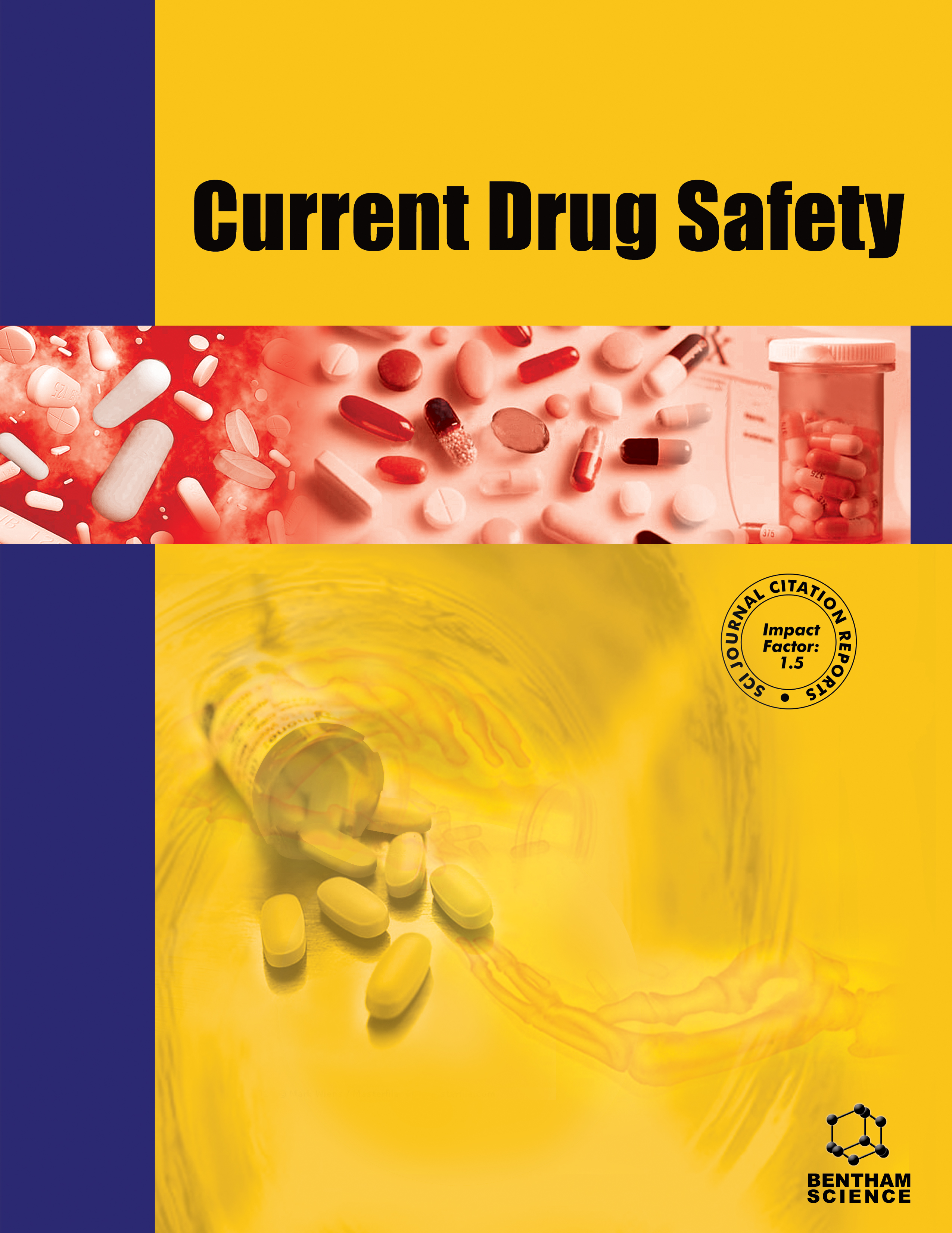- Home
- A-Z Publications
- Current Drug Safety
- Issue Home
Current Drug Safety - Current Issue
Volume 20, Issue 1, 2025
-
-
Natural Flavonoids: Fortifying Renal Defence Mechanism
More LessAuthors: Tanya Jain, Manish Pal Singh and Kashmira J. GohilBackgroundThe kidneys, intricate organs responsible for maintaining fluid and electrolyte balance, are susceptible to damage from diverse nephrotoxic insults, including drugs, toxins, and metabolic disorders. In recent years, flavonoids, bioactive compounds abundant in fruits, vegetables, and herbal extracts, have emerged as promising candidates for renal protection due to their potent antioxidant and anti-infl Read More
-
-
-
Role and Responsibilities of Various Stakeholders in Pharmacovigilance
More LessIn this review paper, we have analyzed the potential and issues associated with Pharmacovigilance (PV). The analysis is divided into four sections: background, stakeholders, data sources, and medicinal chemistry. Each section discusses the current state, the future trends, and the best practices of PV. The main purpose, methods, results, and implications of our analysis are summarized.BackgroundPV is the science and Read More
-
-
-
A Systematic Review of the COVID Vaccine's Impact on the Nervous System
More LessAims & ObjectivesThe objective of this study was to conduct a systematic review of research pertaining to the COVID-19 vaccine and its association with neurological complications.MethodsWe performed a comprehensive search of the literature using Google Scholar, PubMed, and NCBI databases from December 2021 to December 2022. For Google Scholar, PubMed, and NCBI databases we used the following key search Read More
-
-
-
Evaluation of Appropriate Use of Proton Pump Inhibitors in Non-critically Ill Patients in Tertiary Medical Center: A Retrospective Study
More LessBackgroundThere are concerns about indiscriminate prescriptions and the inappropriate use of proton pump inhibitors (PPIs) without any clear indications, especially among non-critically hospitalized patients.ObjectiveThis study aimed to characterize PPI prescriptions among non-critically hospitalized patients in a tertiary care hospital in Saudi Arabia.MethodsA retrospective cross-sectional study was conducted at the King Read More
-
-
-
Impact of Clinical Pharmacist-conducted Medication Reconciliation at Admission and Discharge on Medication Safety in Patients Hospitalized with Acute Decompensated Heart Failure
More LessBackgroundMost studies have focused on the impact of medication reconciliation on one of the points of hospital admission or discharge. In this study, we aimed to investigate the impact of medication reconciliation on medication safety in patients hospitalized with acute decompensated heart failure at both admission and discharge.MethodsThis was a prospective, single-center, cohort study conducted in a tertiary care c Read More
-
-
-
Azathioprine-induced Veno-occlusive Hepatotoxicity in a Patient with Myasthenia Gravis
More LessAuthors: Nikhil Dongre, Jayantee Kalita and Usha K. MisraIntroductionMyasthenia gravis (MG) is an autoimmune disorder of post-synaptic neuromuscular junction characterised by fatigable muscle weakness and is treated with prednisolone with or without other immunosuppressants, including azathioprine (AZA). Veno-occlusive hepatotoxicity of AZA is a rare complication in MG.Case ReportWe report a 35-year-old man with MG, was treated with pyridostigmine, prednisolone, a Read More
-
-
-
A Severe Case of Isotretinoin Induced Eosinophilic Pneumonia and Pericardial Effusion, a Case Report
More LessBackgroundWe report a case of a 25-year-old female who presented with fever, rash and general malaise.Case PresentationShe was initially diagnosed and treated for peri-/myocarditis, but she deteriorated quickly with the development of extensive bilateral consolidations for which she was mechanically ventilated. Two weeks before admission, she took isotretinoin for less than a week for disfiguring acne. Diagnosis of dr Read More
-
-
-
Persistent Hiccups Shortly after Tramadol Intake: A Case Report and Literature Review
More LessBackground and objectiveTramadol can inhibit serotonin and norepinephrine reuptake leading to stimulation of the central component of the hiccup reflex arc. We have found only two previous cases of tramadol-induced hiccups. Additionally, three pharmacovigilance studies have investigated the involvement of tramadol in cases who have developed hiccups as adverse effects. Herein, we have presented a case of a middle-ag Read More
-
Volumes & issues
-
Volume 20 (2025)
-
Volume 19 (2024)
-
Volume 18 (2023)
-
Volume 17 (2022)
-
Volume 16 (2021)
-
Volume 15 (2020)
-
Volume 14 (2019)
-
Volume 13 (2018)
-
Volume 12 (2017)
-
Volume 11 (2016)
-
Volume 10 (2015)
-
Volume 9 (2014)
-
Volume 8 (2013)
-
Volume 7 (2012)
-
Volume 6 (2011)
-
Volume 5 (2010)
-
Volume 4 (2009)
-
Volume 3 (2008)
-
Volume 2 (2007)
-
Volume 1 (2006)
Most Read This Month Most Read RSS feed
Article
content/journals/cds
Journal
10
5
false
en


